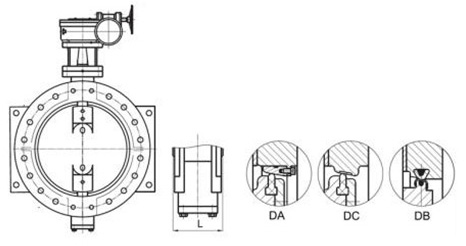Novemba . 26, 2024 07:27 Back to list
flanged gate valve
Understanding Flanged Gate Valves A Comprehensive Overview
Flanged gate valves are essential components in various industrial applications, particularly in the oil and gas, water treatment, and chemical processing sectors. Their primary function is to regulate the flow of fluids through pipelines while providing a tight seal when closed. This article will delve into the features, functions, advantages, and considerations to keep in mind when using flanged gate valves.
What Is a Flanged Gate Valve?
A flanged gate valve is a type of valve that uses a gate mechanism to control fluid flow. The term flanged refers to the design of the valve’s ends, which have protruding edges (flanges) that allow for secure attachment to pipes using bolts or other fastening methods. The gate within the valve moves up and down to either allow or block the flow of fluid. When the valve is fully open, the gate is fully retracted, providing minimal resistance to fluid flow.
Key Features of Flanged Gate Valves
1. Construction and Materials Flanged gate valves are typically constructed from durable materials such as cast iron, stainless steel, or carbon steel. The material choice depends on the fluid being handled and the environmental conditions to which the valve will be exposed.
2. Flange Standards These valves are available in various flange standards, including ANSI, DIN, and JIS, aligning with industry requirements and ensuring compatibility with existing piping systems.
3. Size and Pressure Ratings Flanged gate valves come in various sizes, often ranging from 1 inch to 30 inches in diameter. They are also rated for different pressure classes, ensuring they can handle specific applications without risk of failure.
4. Operation Flanged gate valves can be operated manually via a handwheel or automatically using electric, pneumatic, or hydraulic actuators. This flexibility allows for enhanced control over fluid flow in different settings.
Advantages of Flanged Gate Valves
flanged gate valve

2. Full Bore Design Flanged gate valves are often designed with a full bore, which means that the internal diameter of the valve is the same as the internal diameter of the pipeline. This design enhances flow efficiency and reduces turbulence.
3. Reliable Sealing When closed, flanged gate valves offer a tight seal, preventing leaks and ensuring that no fluid escapes when the system is under pressure.
4. Versatility These valves are suitable for various applications, including those involving water, steam, oil, and gases, making them a versatile choice in industrial settings.
Considerations when Using Flanged Gate Valves
Despite their many advantages, there are several factors to consider when selecting and using flanged gate valves
1. Not Suitable for Throttling Flanged gate valves are not designed for throttling purposes. Operating them in a partially open position may lead to excessive wear and potential damage.
2. Maintenance Needs Regular maintenance is required to ensure optimal performance and longevity. This includes inspecting the seals, replacing worn components, and ensuring that the valve operates freely.
3. Installation Position Ideally, flanged gate valves should be installed in a horizontal position for optimal functionality. Vertical installations may lead to flow issues and reduce efficiency.
4. Temperature and Pressure Limits It is essential to consider the temperature and pressure limits of the flanged gate valve relative to the application to prevent failure or safety hazards.
Conclusion
Flanged gate valves play a crucial role in controlling fluid flow in various industries. Their robust construction, low flow resistance, and reliable sealing capabilities make them a preferred choice for many applications. However, understanding their limitations and maintenance requirements is essential for ensuring their effective and safe operation. As industries continue to evolve, flanged gate valves will remain vital components in the quest for efficient fluid handling and control. Selecting the right gate valve for specific needs will ultimately contribute to improved safety and operational efficiency in any fluid management system.
Share
-
Reliable Wafer Type Butterfly Valves for Every IndustryNewsJul.25,2025
-
Reliable Flow Control Begins with the Right Ball Check ValveNewsJul.25,2025
-
Precision Flow Control Starts with Quality ValvesNewsJul.25,2025
-
Industrial Flow Control ReliabilityNewsJul.25,2025
-
Engineered for Efficiency Gate Valves That Power Industrial PerformanceNewsJul.25,2025
-
Empowering Infrastructure Through Quality ManufacturingNewsJul.25,2025